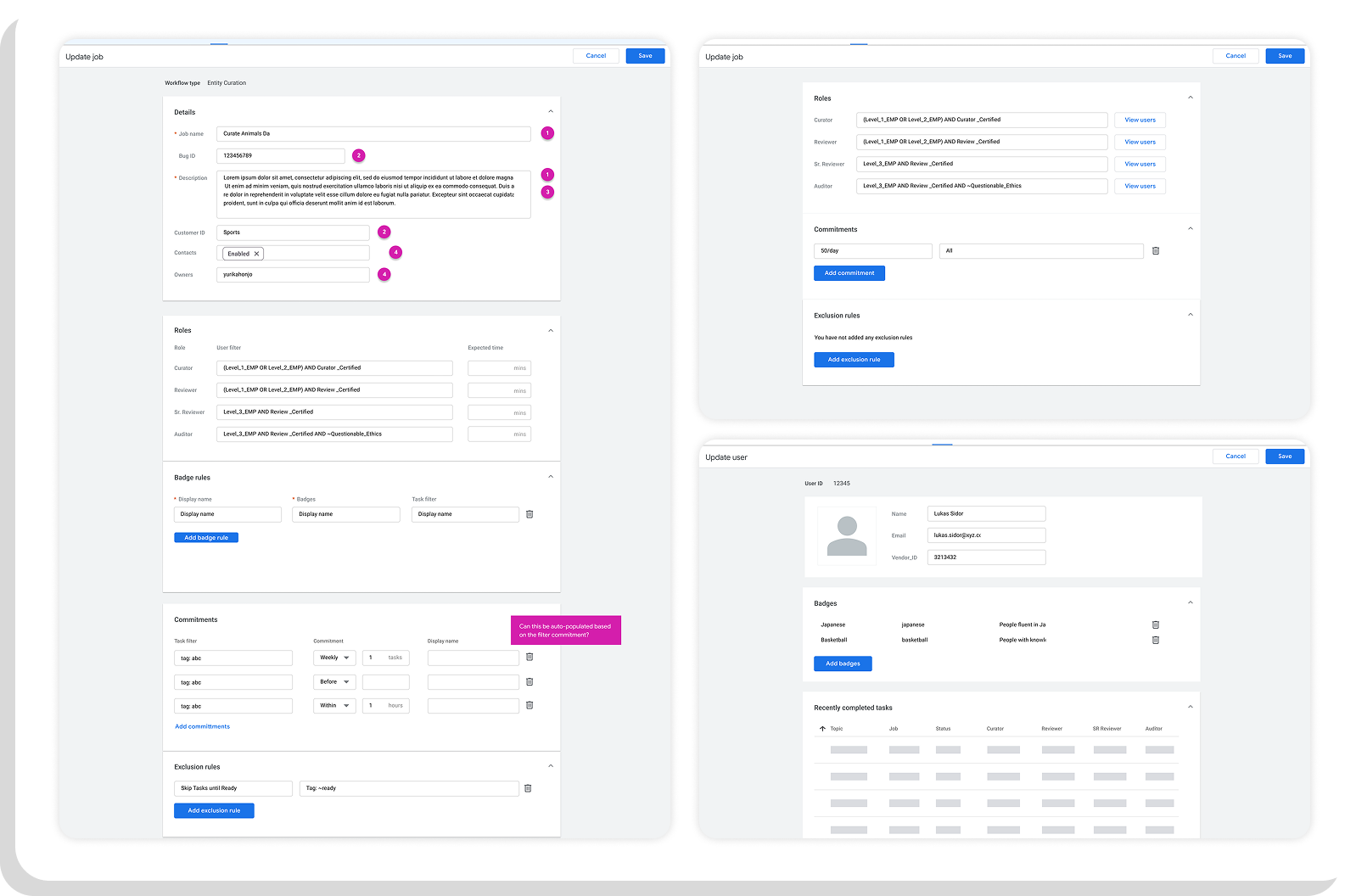The specific visuals and details for this project are confidential.
Tools behind the scenes of Google Search
UX for a critical internal platform for Google’s Knowledge Graph
Google | Interaction Designer | 2022 - 2024
What is it
The accuracy of Google’s Knowledge Graph and Knowledge Panels is essential for public trust.
While automated tools serve as the first safeguard, a sophisticated human-in-the-loop approach is critical for validating high-impact information during events like elections, health crises, and breaking news..
I led the end-to-end UX for “Project Veritas” (internal codename), the core platform at the heart of this process.
The challenge was to overhaul the platform into a scalable, precise, and high-performance tool that supports a global curation team, directly improving the efficiency of the information curation workflow.
What I did
As the lone UX designer, I led the full design strategy and rollout. My core task was the evolution of the platform from a manual platform into an efficient, intelligent tool for curation experts.
LLM/AI integration
Conceived and prototyped designs using LLM and AI capabilities.
End to end workflows
Shaped the end-to-end workflow, from creation to assignment.
Design language
Established a unified system of previously missing colors, typography, and interactions, adding consistency and clarity to the curator workflow.
Universal taskbar
This core element features AI-powered alerts.
Data visualization
Dashboards that enabled managers to tackle quality and schedule risks proactively.
What comes next is a representative summary of the project, omitting sensitive details to protect confidentiality.
A story of impact: How my work ensured accuracy
To illustrate the impact of my work, let’s picture a hypothetical scenario in San Francisco.
After: New intelligent workflow
A user spots an incorrect population stat in the San Francisco Knowledge Panel.
They flag the error with a “Feedback” submission.
The feedback is auto-analyzed and delivered to the right curator in seconds. The modular taskbar I built delivers AI-powered suggestions, enabling fast verifications and approvals in minutes, not days.
This feedback landed in a shared queue, requiring a manager to manually locate the right curator and assign the task, stretching the fix over several days.
The knowledge graph is updated only after a manager manually routes the task is assigned to an expert.
Before: Slow, manual correction
A user spots an outdated population stat in San Francisco’s Knowledge Panel.
They report the error using the “Feedback” option.
Outcome & Impact
Drove a substantial increase in task completion.
My taskbar component slashed integration for developers from weeks to just hours.









